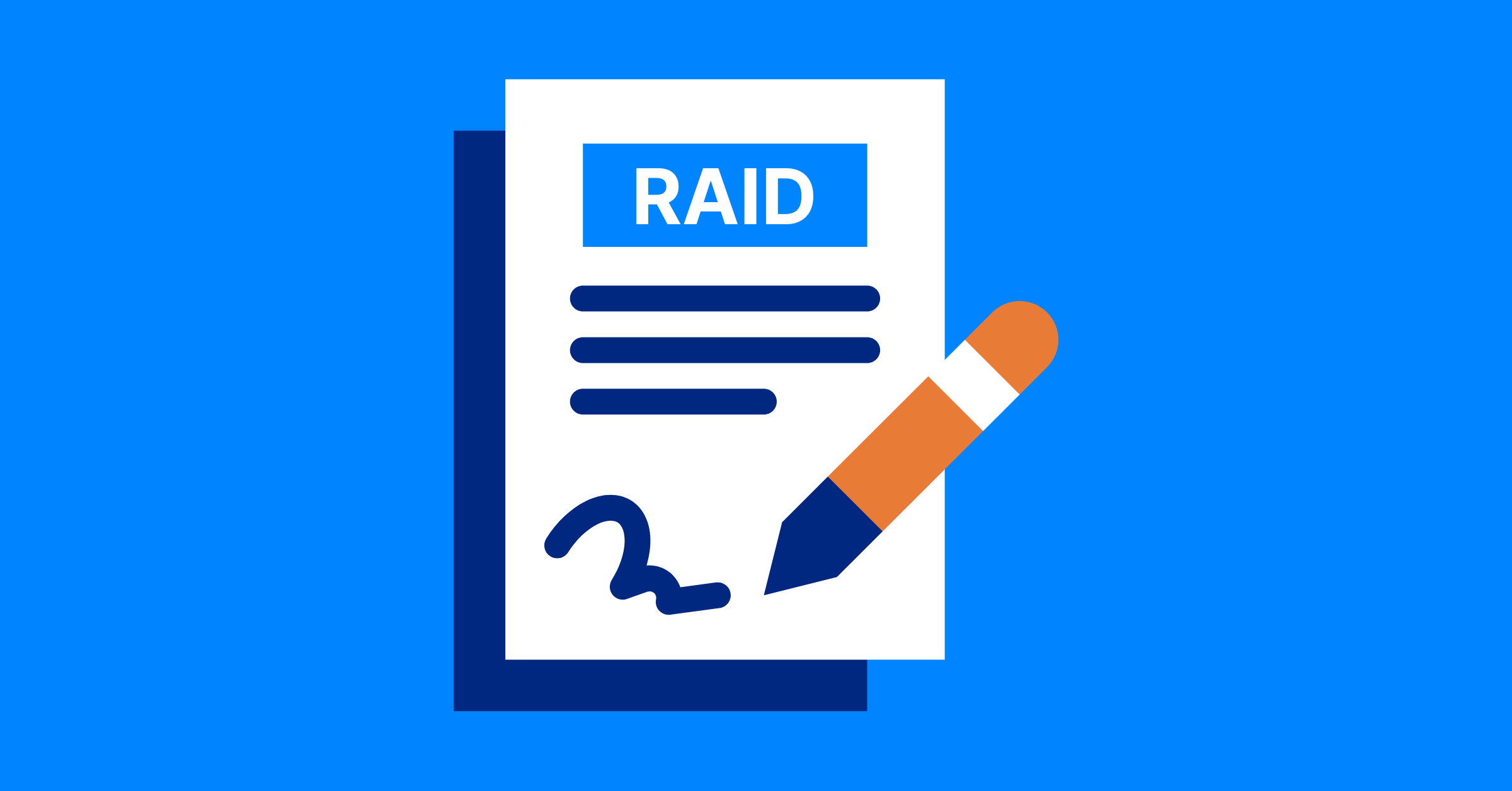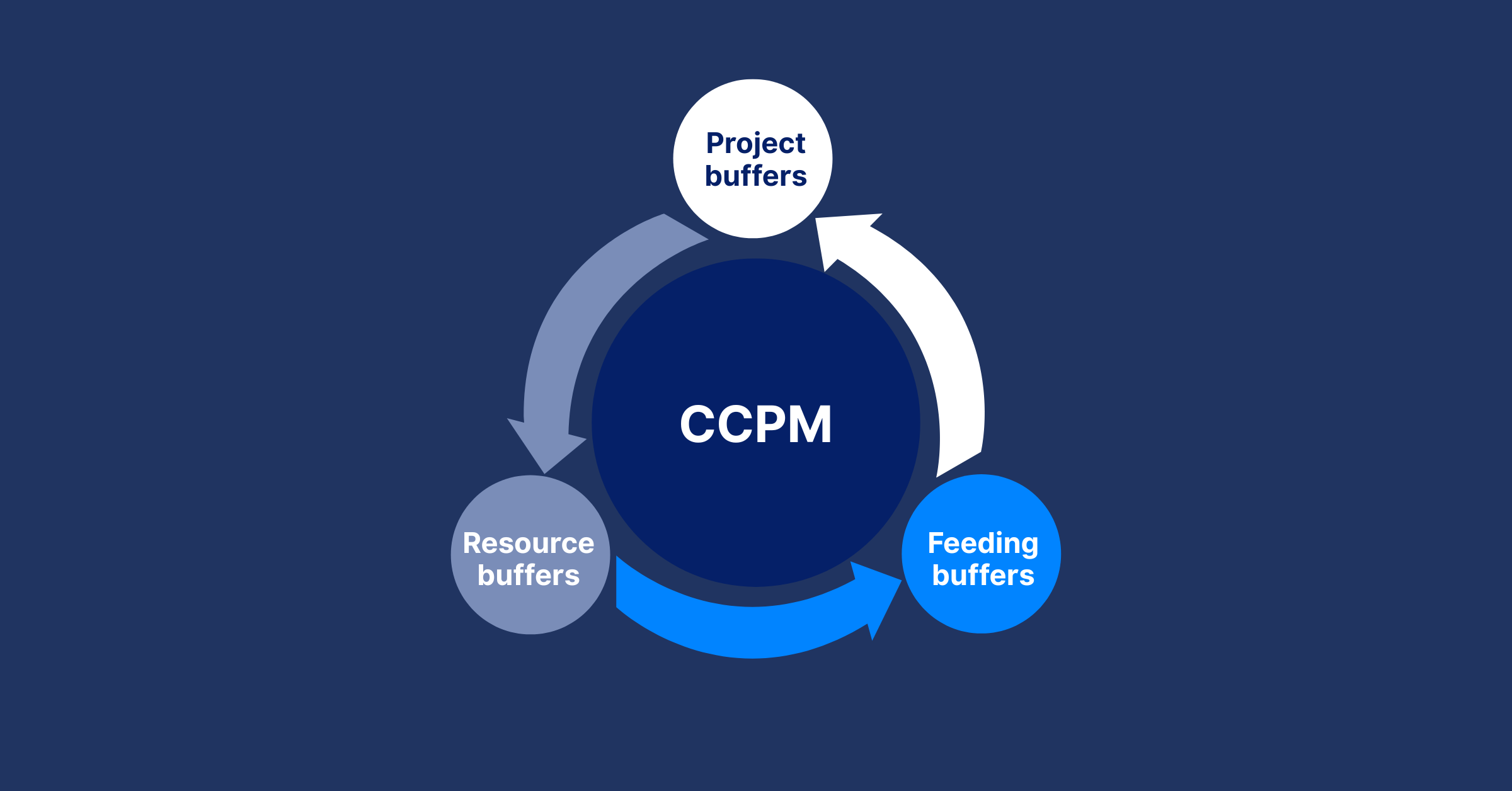Understanding Project Baseline: Meaning, Key Components, and Gantt Chart Guide
Learn what a project baseline is, why it's important, and how to set one using a Gantt chart. Discover key components and best practices for managing baselines.
In project management, ensuring projects are delivered on time, within scope, and on budget is paramount. One crucial tool to help achieve these objectives is the project baseline. A project baseline serves as the standard against which a project’s performance is measured, offering a clear picture of progress and helping to track deviations from the planned path. In this article, we will explore what a project baseline is, why it’s essential, and how it is used in project management, especially when integrated with Gantt charts.
What are Project Baselines?
A project baseline is an approved version of the project’s scope, schedule, and cost, used as a benchmark to measure and assess project performance. It consists of three key elements: scope baseline, schedule baseline, and cost baseline. These elements help project managers monitor progress and make necessary adjustments to ensure the project stays on track. Having a well-established baseline is critical for managing expectations and making data-driven decisions throughout the project lifecycle.
Why are Project Baselines Important in Project Management?
A McKinsey report reveals that only 1 out of 14 IT projects is delivered on time and within budget. This highlights the challenges in project management, where effective tracking and control are crucial. A project baseline plays a critical role in project management by providing a concrete reference point for performance tracking. Here's why it's important:
- Performance Monitoring: The baseline helps track the project's actual progress against the planned scope, schedule, and cost. Any deviations can be identified early, allowing for timely corrective actions.
- Scope Control: With a clear scope baseline, project managers can prevent scope creep, ensuring that only the agreed-upon deliverables are included in the project.
- Resource Management: By establishing a cost and schedule baseline, project managers can manage resources more effectively, preventing over-expenditure or delays due to resource mismanagement.
- Stakeholder Communication: The baseline serves as a common reference point for all stakeholders, making it easier to communicate progress, setbacks, and adjustments, thereby maintaining transparency and trust.
In summary, the project baseline is a foundation that underpins project control, offering a clear roadmap for project success while enabling flexibility to adapt to changes.
What are the key components of a project baseline?
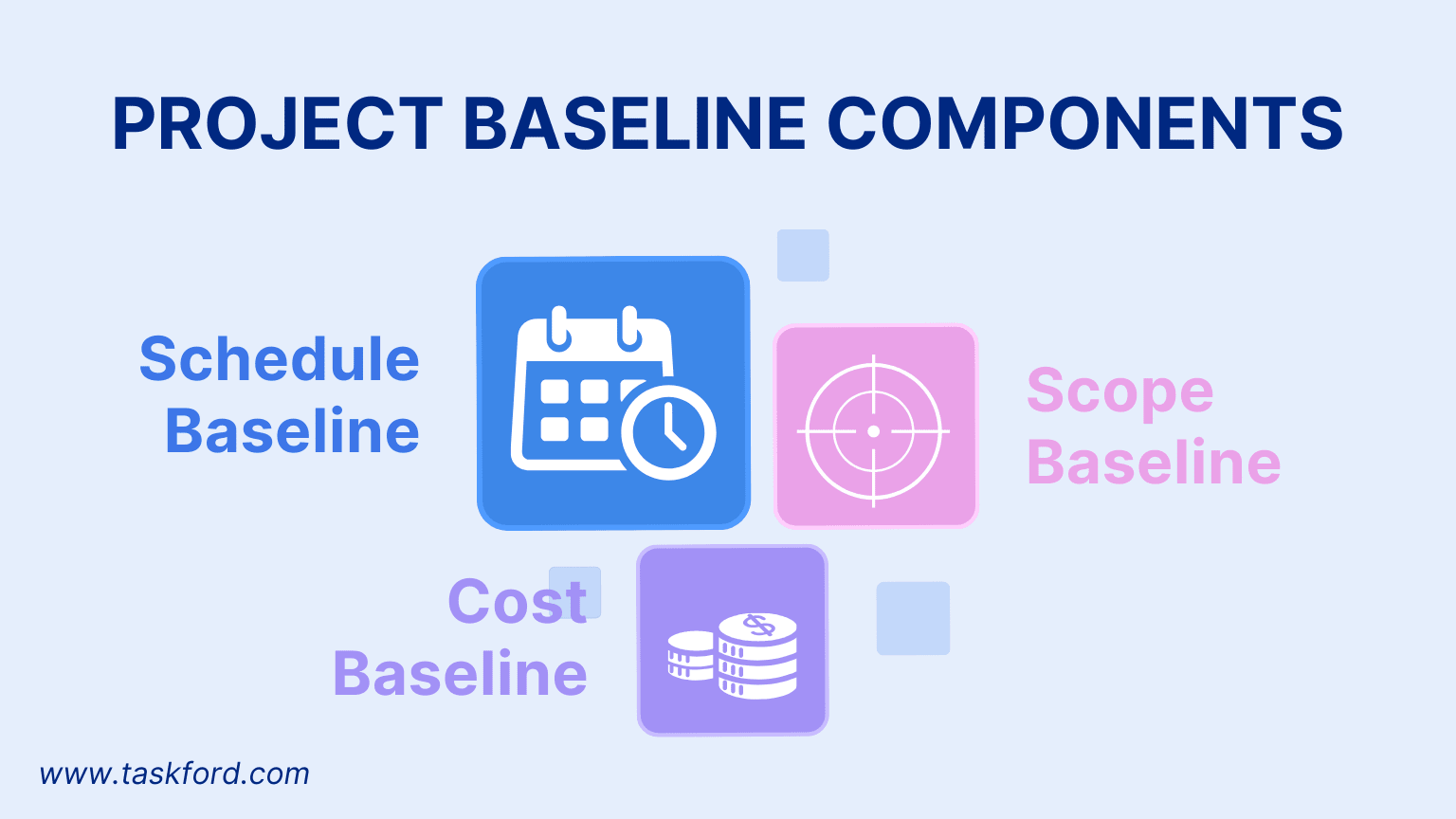
A complete project baseline consists of three main components:
1. Scope Baseline
The scope baseline defines what is included and excluded in the project. It outlines the project deliverables, objectives, and the specific work required to complete the project. The scope baseline is critical because it sets clear boundaries and prevents scope creep, the uncontrolled expansion of the project without proper adjustments to time, cost, and resources.
Key Elements:
- Project Scope Statement: Describes the project's goals, deliverables, and requirements.
- Work Breakdown Structure (WBS): A hierarchical breakdown of tasks and activities that need to be completed to achieve the project goals.
- Scope Management Plan: Defines how the scope will be managed and controlled throughout the project.
Example: A software development project may have a scope baseline outlining required features, technical specifications, and performance benchmarks.
2. Schedule Baseline
The schedule baseline represents the approved version of the project timeline, including planned start and finish dates for each task, milestone, and overall project completion. It helps project managers measure actual performance against the planned timeline, identifying delays or changes in schedule.
Key Elements:
- Gantt Chart: A visual representation of the project schedule, showing tasks, durations, dependencies, and milestones.
- Critical Path: The sequence of tasks that determines the project's minimum completion time.
- Milestones: Significant points or events in the project that mark important achievements or decision points.
Example: A marketing team launches a campaign in three phases. If the second phase is delayed, the baseline helps measure the impact on the final deadline.
3. Cost Baseline
The cost baseline is the approved version of the project budget, including estimates for all resources, tasks, and activities. It provides a framework for monitoring and controlling project spending and ensuring that costs remain within the planned budget.
Key Elements:
- Budget Estimates: The cost estimates for each project activity or phase.
- Cost Management Plan: Outlines how costs will be monitored, controlled, and reported throughout the project.
- Contingency Reserves: Funds set aside to address unforeseen issues or risks that may arise during the project.
Example: A construction project with a budget of $500,000 can track actual expenses against the cost baseline to ensure financial control.
How To Set a Project Schedule Baseline in a Gantt Chart?
Setting a schedule baseline in a Gantt chart involves a series of structured steps to establish the timeline against which the progress of the project will be measured. A Gantt chart is an invaluable tool in this process, providing a visual representation of the schedule, tasks, dependencies, and milestones. Below is a step-by-step guide on how to set a schedule baseline in a Gantt chart:
1. Define the Project Scope and Deliverables
Before setting up a Gantt chart, establish the scope of the project. Clearly outline:
- Project goals and objectives
- Major deliverables
- Key milestones and deadlines
- Stakeholder expectations
Example: If you are managing a website development project, define deliverables such as UI design, development, testing, and launch.
2. Break Down the Project into Tasks (Work Breakdown Structure - WBS)
A work breakdown structure (WBS) divides the project into smaller, manageable tasks. Each task should have:
- A clear objective
- Assigned resources
- Estimated duration
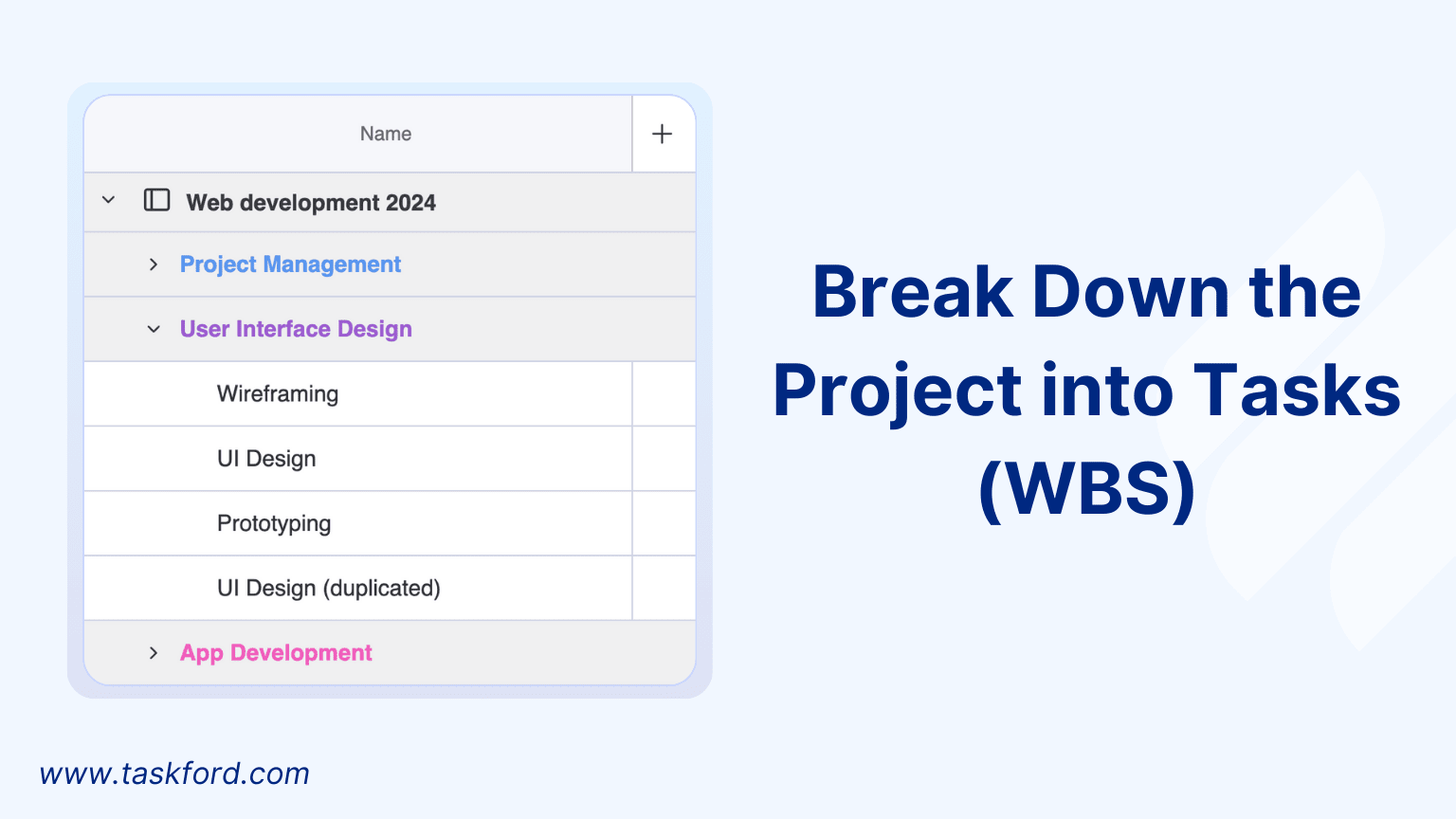
Example:
Phase 1: Research and Planning
- Task: Gather requirements
- Task: Define project scope
Phase 2: UI/UX Design
- Task: Create wireframes
- Task: Develop prototypes
By structuring tasks hierarchically, the Gantt chart will provide a clear timeline and dependencies.
3. Assign Start and End Dates to Tasks
Each task in the Gantt chart must have a start and end date to form the project’s schedule baseline.
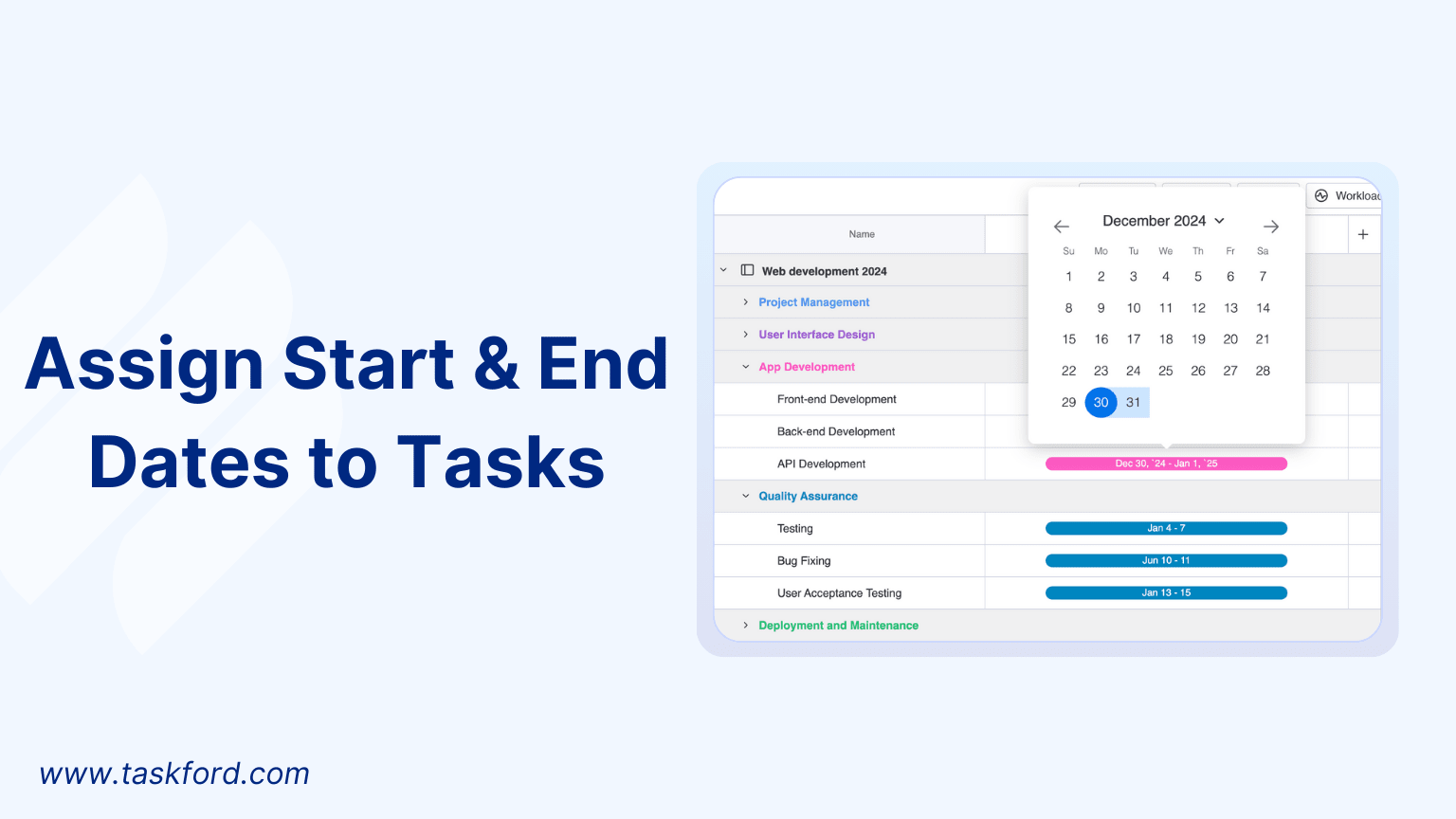
Example:
This schedule will later serve as the schedule baseline for tracking delays and deviations.
4. Establish Task Dependencies
Some tasks cannot begin until others are completed. In a Gantt chart, you can define dependencies:
- Finish-to-Start (FS) – Task B starts only after Task A finishes.
- Start-to-Start (SS) – Task B starts when Task A starts.
- Finish-to-Finish (FF) – Task B finishes when Task A finishes.
- Start-to-Finish (SF) – Task B finishes when Task A starts.
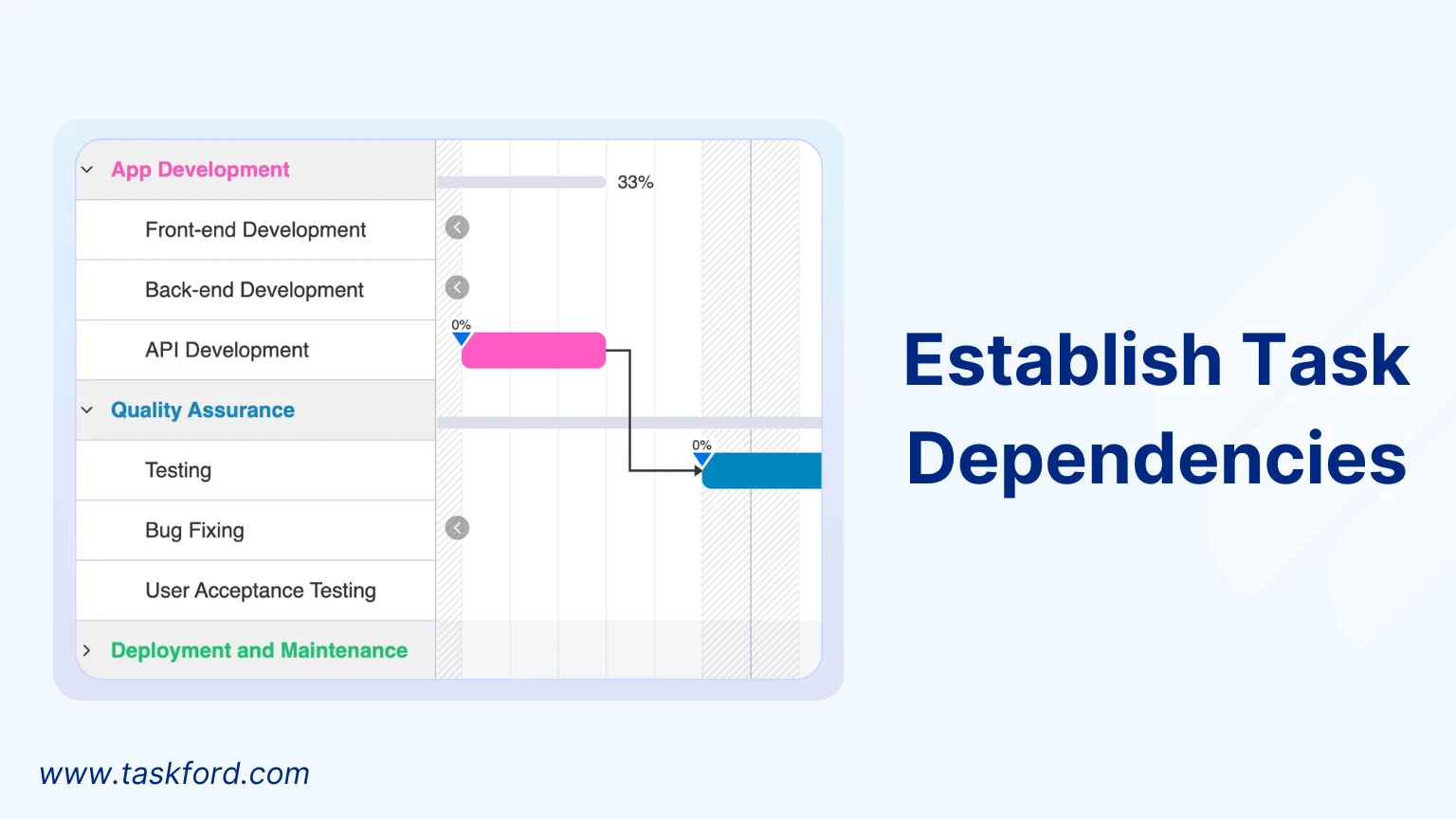
Example: In software development, testing cannot begin until development is complete (FS dependency).
Using dependencies in a Gantt chart ensures a realistic project timeline.
5. Allocate Resources and Budget to Tasks
For accurate cost and resource tracking, assign:
- Team members responsible for tasks
- Available work hours per task
- Estimated costs for each phase
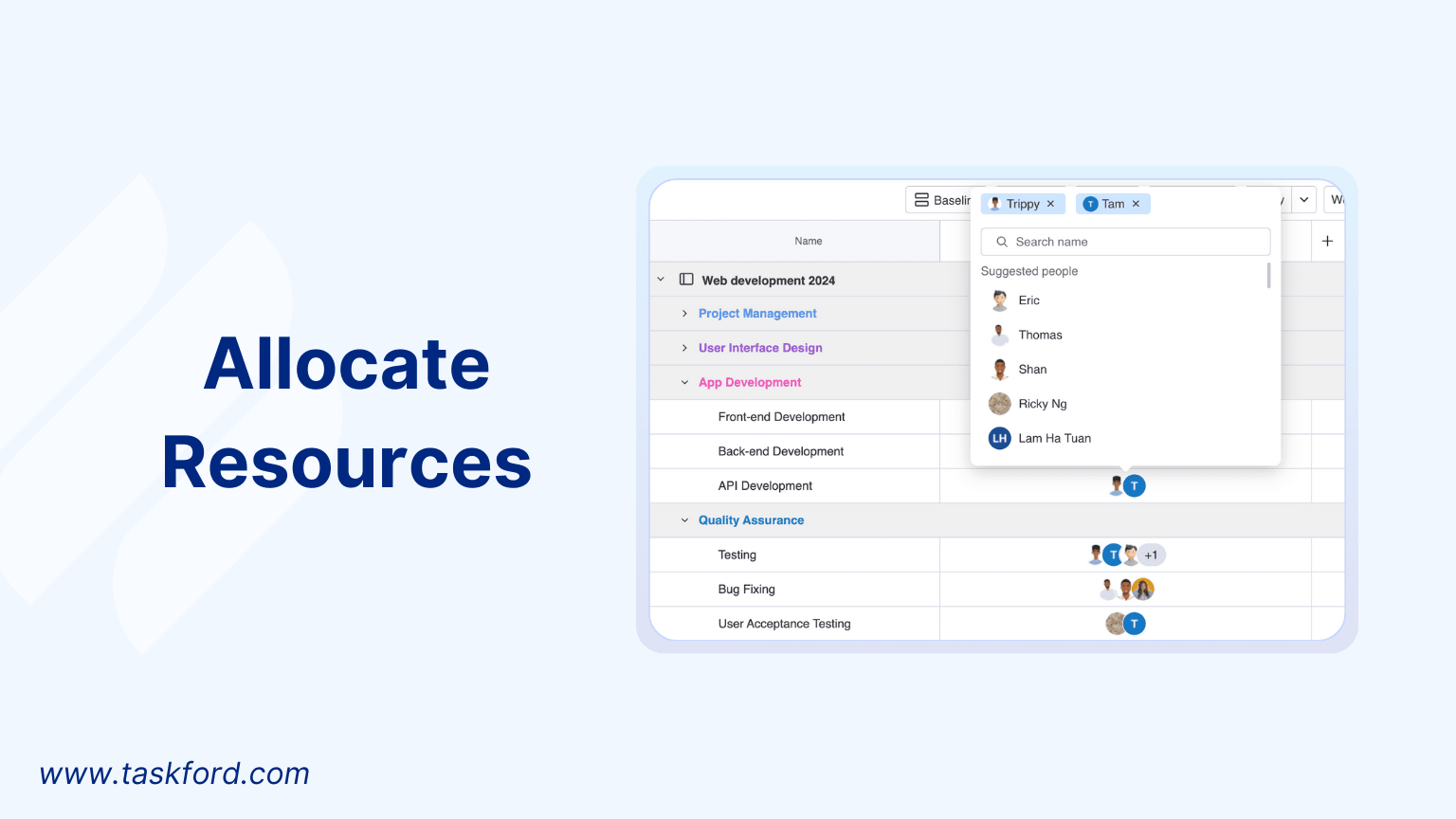
Example:
- Design team allocated 40 hours for UI wireframes
- Development team allocated 100 hours for front-end and back-end coding
By linking resource allocation and budgeting to the Gantt chart, teams can ensure proper workload distribution.
6. Set the Project Baseline in the Gantt Chart
Once the project plan is finalized, lock in the baseline in the Gantt chart tool. The baseline will capture:
- Original task start and end dates
- Planned dependencies and milestones
- Budget and resource allocation
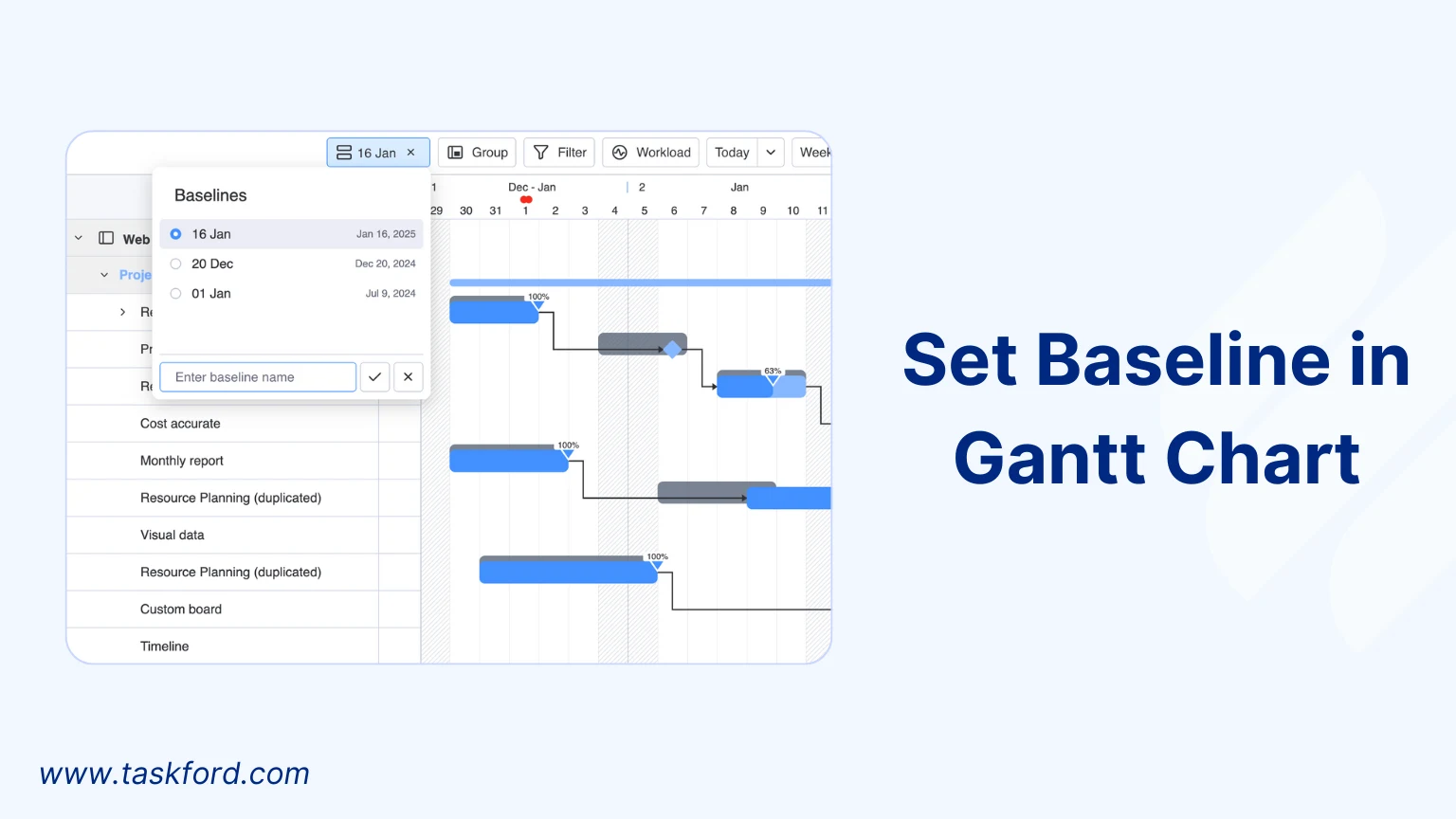
7. Monitor Progress & Compare Actual vs. Baseline
Once the project is in progress, continuously compare actual performance vs. baseline.
How to Track Performance in a Gantt Chart:
- Delayed tasks appear in red, indicating schedule deviations.
- Cost overruns trigger budget alerts.
- Missed milestones highlight risks in project delivery.
By reviewing changes regularly, project managers can adjust timelines and budgets proactively.
8. Adjust and Update Baselines as Needed
If there are significant project changes (e.g., scope modifications, external delays), update the baseline to reflect the new plan. However, always:
- Document baseline revisions
- Justify changes with approval from stakeholders
- Keep a record of previous baselines for comparison
Example: If a supplier delay pushes a construction project by two weeks, the revised baseline should reflect the updated schedule.
Final Words
A project baseline is essential for keeping projects on track by providing a clear benchmark for scope, schedule, and cost. By setting a well-defined baseline, teams can monitor progress, identify deviations, and make data-driven adjustments to ensure project success. Using Gantt charts simplifies baseline tracking, helping teams stay organized and proactive. With the Gantt Chart feature in TaskFord, managing baselines becomes effortless, ensuring your projects remain on schedule and within budget.
Related Blogs:
Making work simpler,
smarter, and more connected
Join our waitlist and be notified first.

Related Blog
Subscribe for Expert Tips
Unlock expert insights and stay ahead with TaskFord. Sign up now to receive valuable tips, strategies, and updates directly in your inbox.


